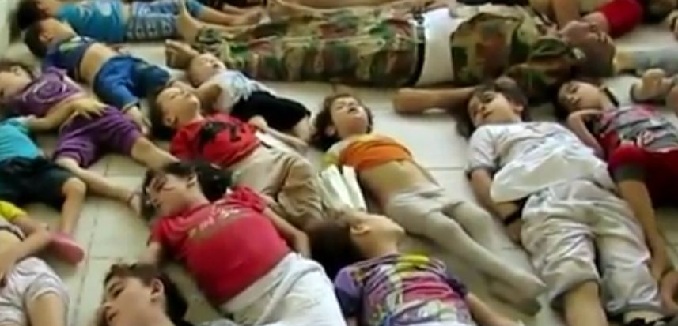France has been at the international forefront of emphasizing both that Syria’s Bashar al-Assad regime has used chemical weapons, and of calling for action against the regime. Some of the differences between France and its more cautious Western allies have been written off as Paris seeking to intervene in what used to be French territory. Others, however, have been a simple result of there being an array of French observers – from human rights workers to reporters – on the ground in Syria.
French journalists have extensively covered the conflict, and French weapons labs have confirmed the use of chemical weapons by the regime. A French news report, which appeared in Le Monde in late May, described how one chemical weapons attack against opposition-held areas proceeded:
At first, there is only a little sound, a metallic ping, almost a click. And in the confusion of daily combat in Jobar’s Bahra 1 sector, this sound didn’t catch the attention of the fighters of the Tahrir al-Sham (‘Liberation of Syria’) Brigade. ‘We thought it was a mortar that didn’t explode, and no one really paid attention to it,’ said Omar Haidar, chief of operations of the brigade, which holds this forward position less than 500 meters from Abbasid Square.
Searching for words to describe the incongruous sound, he said it was like ‘a Pepsi can that falls to the ground.’ No odor, no smoke, not even a whistle to indicate the release of a toxic gas. And then the symptoms appear. The men cough violently. Their eyes burn, their pupils shrink, their vision blurs. Soon they experience difficulty breathing, sometimes in the extreme; they begin to vomit or lose consciousness. The fighters worst affected need to be evacuated before they suffocate.
A declassifed French report regarding the August 21 mass chemical weapons attack on opposition-controlled Damascus suburbs has become central in arguments accusing the regime of chemical weapons use. David Kenner at Foreign Policy explained how the French report zeroed in on the sophistication of the chemical agents in linking their use to the regime:
Assad’s sarin stockpiles, which the United States says were used in the Aug. 21 attack, reveal a “technological mastery” of chemical weapons, according to the French. The sarin is stored in binary form — the two chemical precursors necessary to make the gas are kept separate and are only mixed immediately before use. This technological sophistication may be a key point when U.N. investigators release their report on the Damascus attack: If they find that the toxic agent used in the attack was an advanced form of sarin — containing chemical stabilizers and dispersal agents — the weapon will most likely have come from Syrian regime stockpiles.
The French assessment comes alongside opposition-provided images posted to the the Brown Moses blog – which specializes in identifying different types of munitions – showing shells that were minimally damaged after use. The shells are consistent with the type that would be used for dispersing chemical weapons.
[Photo: SNN Shaam English News / YouTube]




